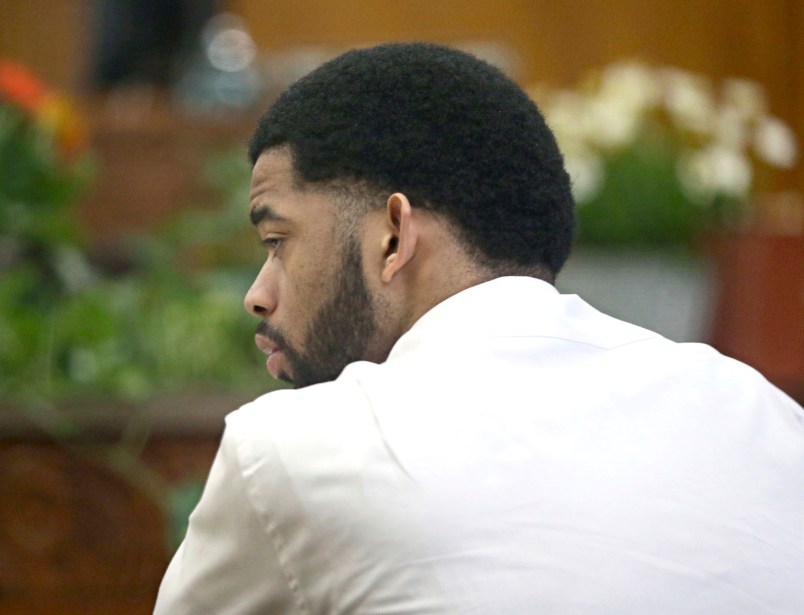MILWAUKEE (AP) — The prosecutor who charged a former Milwaukee police officer with first-degree reckless homicide in the killing a 23-year-old black man told jurors Tuesday the man was defenseless and “looked like a child” when he was fatally shot last year.
But an attorney defending Dominique Heaggan-Brown against the charge countered that the former officer acted in self-defense because the man was armed when a brief foot chase began after a traffic stop.
Jurors have begun deliberating the case after attorneys delivered closing arguments Tuesday.
Sylville Smith’s death at the hands of Dominique Heaggan-Brown on Aug. 13 sparked two nights of rioting in the Sherman Park neighborhood and highlighted the strained relationship between police and African-Americans in the city. But the case is different from recent high-profile police shootings that have inspired a national conversation about how officers interact with African-Americans: Heaggan-Brown and Smith are both black and from the north side of the city where the shooting occurred.
Milwaukee County District Attorney John Chisholm told jurors Heaggan-Brown didn’t need to use deadly force against Smith, who had thrown away the gun he was carrying. Heaggan-Brown shot Smith on his right bicep as he threw the gun away over a fence. He shot him again 1.69 seconds later, this time in the chest, when Smith fell on his back with his legs in the air.
“He’s in the most vulnerable position that he can possibly be in,” Chisholm said. “He looks like a child.”
Heaggan-Brown and two other officers had approached Smith’s rental car because it was parked more than a foot from the curb, and police believed a drug deal was happening. Heaggan-Brown and two officers were making their way back to their district station when they decided to initiate one last traffic stop.
Chisholm has said that Heaggan-Brown was justified when he fired the first shot, but argues the second shot was unnecessary.
Jonathan Smith, one of Heaggan-Brown’s defense attorneys, told jurors the former officer had to make a split-second decision and didn’t have the benefit of seeing the events unfold in slow-motion, which is how prosecutors have shown jurors the shooting using still frames from bodycam footage.
“That first shot was a justifiable shot and that justification did not change in 1.69 seconds,” Smith said, alluding to the time that transpired before the first and second shot.
During the brief foot chase, Smith slipped and fell after turning into a path between two houses. Heaggan-Brown fired the first shot almost simultaneously with Smith throwing away his gun when he got up.
The fatal encounter transpired over 12 seconds from the time Heaggan-Brown got out of his car to begin chasing Smith to when the fatal shot was fired.
Heaggan-Brown faces up to 60 years in prison if convicted. Jurors are also being given the option to choose from two lesser charges instead — second-degree reckless homicide and homicide by negligent operation of a dangerous weapon. The lesser charges carry sentences of up to 25 years and 10 years respectively.
Heaggan-Brown was fired two months after the shooting when he was charged with sexual assault in an unrelated case.







Let’s just cut to the chase and return a not guilty verdict. After all, it was just a black man.